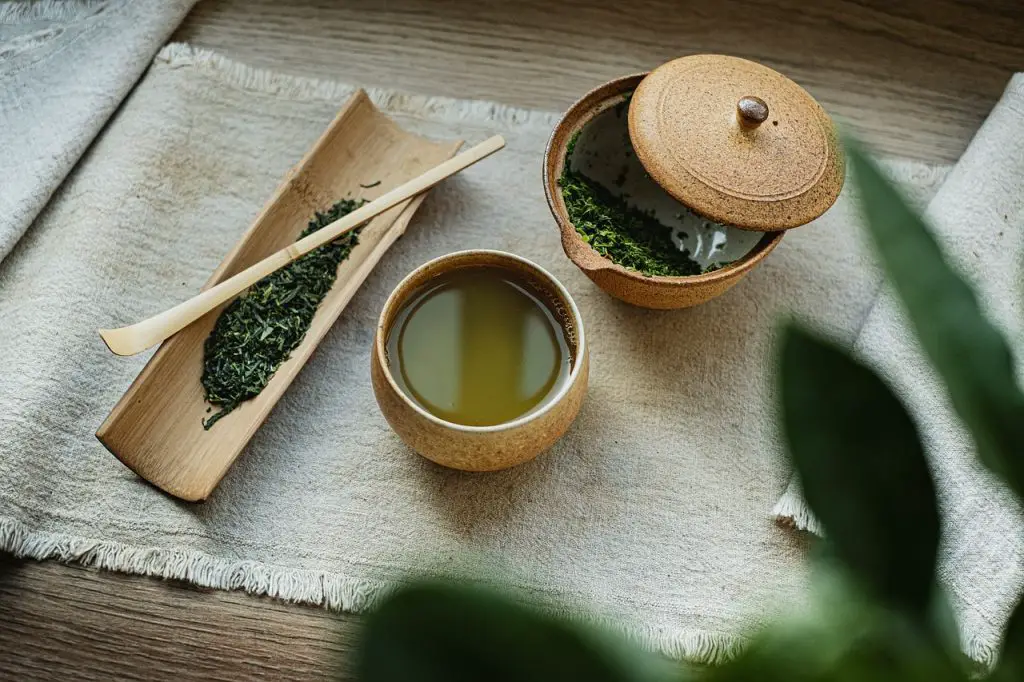Green tea is a beverage that has been cherished for centuries in many parts of the world, particularly in East Asia, where it originated. Renowned for its distinctive taste and numerous health benefits, green tea has gained popularity globally. Whether you’re a long-time green tea enthusiast or a newcomer, there are various tips and tricks that can enhance your experience, making it not only a delicious but also a healthy choice. In this article, we will explore the world of green tea, its history, health benefits, and provide you with practical tips to savor every sip of this refreshing brew.
The History and Varieties of Green Tea
Green tea has a rich history dating back over 4,000 years. It was first discovered in ancient China, where it was initially used for medicinal purposes. Over time, green tea became an integral part of Chinese culture and eventually spread to other parts of Asia and the world.
Varieties of Green Tea
There are numerous varieties of green tea, each with its unique flavor profile and characteristics. Some of the most popular types include:
Sencha: The most common type of green tea in Japan, known for its vibrant green color and grassy, slightly sweet flavor.
Matcha: A powdered green tea that is famous for its use in traditional Japanese tea ceremonies. It has a vibrant green color and a strong, slightly bitter taste.
Dragonwell (Longjing): A famous Chinese green tea with a smooth, slightly nutty flavor and a distinct flat shape.
Gunpowder: This Chinese green tea is rolled into small pellets, resembling gunpowder. It has a bold, smoky flavor.
Jasmine: Green tea scented with jasmine flowers, offering a delightful floral aroma and a delicate, sweet taste.
The Origins of Green Tea
Green tea is made from the leaves of the Camellia sinensis plant. The leaves are minimally processed, which helps retain their natural green color and many health-promoting compounds. Unlike black tea, green tea leaves are not oxidized, preserving their original characteristics.
Health Benefits of Green Tea
Green tea is celebrated for its numerous health benefits, many of which are attributed to its rich polyphenol content, particularly epigallocatechin gallate (EGCG). Here are some of the key health benefits of green tea:
Antioxidant Properties
Green tea is loaded with antioxidants that help combat free radicals in the body. These antioxidants can reduce oxidative stress and lower the risk of chronic diseases, including cancer and heart disease.
Weight Management
The catechins in green tea can boost metabolism and aid in weight management. They can help the body burn more calories, making green tea a popular choice for those looking to shed pounds.
Heart Health
Regular consumption of green tea may reduce the risk of heart disease by improving cholesterol levels and lowering blood pressure. The antioxidants in green tea can also protect the blood vessels from damage.
Brain Health
Green tea contains L-theanine, an amino acid that has been shown to improve cognitive function and enhance mental alertness. It can also help reduce stress and anxiety.
Diabetes Management
Some studies suggest that green tea may help regulate blood sugar levels, making it beneficial for individuals with diabetes or those at risk of developing the condition.
Oral Health
The antimicrobial properties of green tea can help inhibit the growth of harmful bacteria in the mouth, reducing the risk of cavities and gum disease.
Brewing the Perfect Cup of Green Tea
To fully enjoy the delicious and healthful qualities of green tea, it’s essential to brew it correctly. Here’s a step-by-step guide to brewing the perfect cup:
Choose High-Quality Tea
Start with high-quality green tea leaves. Look for fresh, loose-leaf green tea from reputable sources. Avoid tea bags, as they often contain lower-quality tea leaves.
Measure the Tea Leaves
Use approximately 1 to 2 teaspoons of green tea leaves per 8-ounce cup of water. Adjust the amount based on your personal preference and the tea’s strength.
Use Filtered Water
The quality of water is crucial in brewing tea. Use filtered or spring water to ensure the purest taste. Avoid using tap water with a strong chlorine taste.
Preheat Your Teapot or Teacup
Pour a small amount of hot water into your teapot or teacup to preheat it. Swirl the water around and then discard it.
Heat the Water
Heat the water to the appropriate temperature. Green tea is best brewed at lower temperatures than black or herbal teas. The ideal temperature for most green teas is around 175°F (80°C). You can use a thermometer or simply bring the water to a boil and let it cool for a few minutes.
Steeping Time
Pour the hot water over the tea leaves and cover the teapot or teacup with a lid or saucer. Let the tea steep for 1 to 3 minutes, depending on the type of green tea you are using. Be mindful not to over-steep, as this can lead to a bitter taste.
Strain and Serve
After steeping, strain the tea into your teacup to remove the leaves. Green tea can be enjoyed plain or with a slice of lemon, a sprig of mint, or a touch of honey for added flavor.
Storing Green Tea
Proper storage is crucial to maintaining the freshness and flavor of green tea. Follow these tips to store your green tea effectively:
Keep it Airtight: Store green tea in an airtight container to prevent exposure to air, moisture, and odors that can degrade its quality.
Avoid Light: Store green tea away from direct sunlight and fluorescent lights, as they can cause it to deteriorate faster.
Cool and Dry: Keep your green tea in a cool, dry place. Avoid storing it near the stove or other sources of heat.
Use it Fresh: Green tea is best when consumed within six months to a year of purchase. Over time, it can lose its flavor and aroma.
Exploring Green Tea Variations
While traditional green tea is delightful on its own, you can explore various flavor combinations to create unique and enjoyable brews. Here are some ideas to enhance your green tea experience:
Citrus Twist: Add a slice of lemon or orange to your green tea for a refreshing citrus flavor.
Minty Freshness: A few fresh mint leaves can give your green tea a delightful and invigorating twist.
Ginger and Honey: Grated ginger and a drizzle of honey can add warmth and sweetness to your cup of green tea.
Jasmine Infusion: Experiment with jasmine flowers to infuse your green tea with a fragrant floral aroma.
Iced Green Tea: Brew a strong batch of green tea, let it cool, and serve it over ice with a slice of cucumber or a sprig of mint for a cool and revitalizing drink.
Green Tea and Food Pairings
Green tea can complement various dishes and snacks, enhancing both the flavors of the tea and the food. Here are some food pairings to consider:
Sushi and Sashimi: The delicate flavors of green tea harmonize with the subtlety of fresh sushi and sashimi.
Steamed Dim Sum: Green tea is a perfect match for steamed dumplings, buns, and other dim sum dishes.
Salads: A light, green tea pairs well with salads, especially those featuring citrusy or vinaigrette dressings.
Seafood: The earthy notes of green tea complement the natural sweetness of seafood, making it an excellent choice for seafood dishes.
Dark Chocolate: For a decadent pairing, enjoy green tea with high-quality dark chocolate. The contrast of bitter and sweet flavors is delightful.
Green Tea and its Rituals
In many cultures, green tea is not just a beverage but a part of a rich tradition and ritual. Incorporating some of these practices into your tea-drinking routine can add depth to your experience.
Japanese Tea Ceremony: Consider learning about the Japanese tea ceremony, known as “Chanoyu,” and its intricate rituals. While mastering it may take time, incorporating elements of this ceremony, such as mindfulness and attention to detail, can enhance your appreciation of green tea.
Chinese Gongfu Cha: Explore the Chinese Gongfu Cha method of tea preparation, which emphasizes using small teapots, multiple infusions, and precise pouring techniques. This method allows you to savor the evolving flavors of green tea with each steeping.
Tea Meditation: Dedicate a few moments to mindfulness while enjoying your cup of green tea. Focus on the aroma, taste, and sensation of each sip, letting go of distractions and stress.
Green tea is more than just a beverage; it’s a source of pleasure, health benefits, and cultural richness. By understanding its history, appreciating its varieties, and brewing it correctly, you can unlock the full potential of this versatile drink. With a little creativity and an open mind, you can explore the world of green tea, creating delightful pairings and incorporating rituals that transform each cup into a moment of joy and relaxation. So, take the time to savor your green tea, and let it be a source of nourishment for both your body and soul.
Common Myths and Misconceptions
Before we conclude, it’s essential to address some common myths and misconceptions about green tea to ensure that you can enjoy it to the fullest without any unnecessary concerns:
Myth: Green tea is a magic weight-loss solution.
Reality: While green tea can support weight management due to its metabolism-boosting properties, it’s not a magic solution. It should be part of a balanced diet and active lifestyle for best results.
Myth: All green teas taste the same.
Reality: Green teas come in a variety of flavors, aroma profiles, and strengths. Exploring different types and brands will help you discover your personal preferences.
Myth: Green tea should be steeped in boiling water.
Reality: Boiling water can scorch green tea leaves, resulting in a bitter taste. It’s best to use water just below boiling temperature, around 175°F (80°C).
Myth: Green tea contains too much caffeine.
Reality: Green tea typically contains less caffeine than coffee, and the caffeine content varies depending on the type and preparation method. If you’re sensitive to caffeine, choose decaffeinated green tea.
Myth: Green tea can replace your daily water intake.
Reality: While green tea is hydrating, it’s not a substitute for water. You should still aim to drink an adequate amount of plain water throughout the day.
Embracing the Green Tea Lifestyle
In conclusion, green tea offers a world of delightful flavors, health benefits, and cultural significance. By following the tips and guidance provided in this article, you can embark on a journey to fully enjoy the delicious and healthy aspects of green tea.
Whether you’re seeking the antioxidant-rich properties, the subtle complexities of taste, or simply a moment of relaxation, green tea can be your faithful companion. Its versatility, from being a staple in traditional ceremonies to a refreshing iced drink on a hot day, ensures that there is a green tea experience for every occasion.
So, take the time to explore the various varieties of green tea, perfect your brewing technique, and consider incorporating some of the cultural rituals associated with it. With each sip, you can savor the rich history, health benefits, and intricate flavors that green tea has to offer. Make green tea a part of your daily routine, and it will reward you with both pleasure and well-being for years to come.




